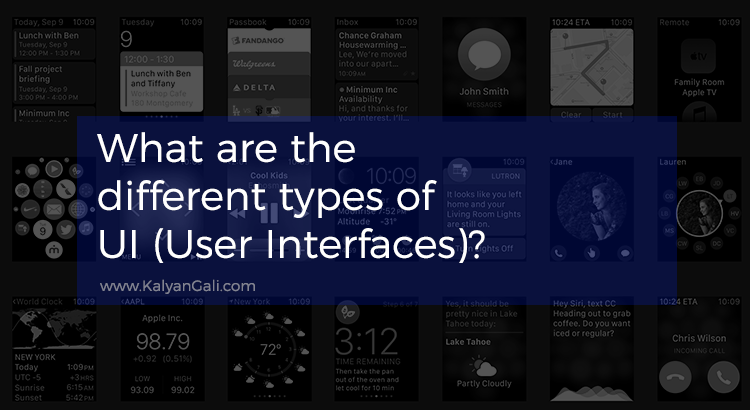What is User Interface or UI?
It is not enough that we build products that function, that are understandable and usable, we also need to build products that bring joy and excitement, pleasure and fun, and, yes, beauty to people’s lives.
People need a way of interacting with machines if they are to be useful. Think of a vending machine – you want a drink, but how do you get the machine to give it to you? Well, you will have to read the display and follow the instructions, put your money in the slot, press the right buttons and eventually your drink will pop out. You got the machine to give you a drink by interacting with it via its ‘user interface’.
In information technology, the user interface (UI) is everything designed into an information device with which a human being may interact — including display screen, keyboard, mouse, light pen, the appearance of a desktop, illuminated characters, help messages, and how an application program or a Web site invites interaction and responds to it.
Back in the 1970’s, if you wanted to use a computer you had to use the command line interface. You couldn’t buy a computer with graphics, icons, buttons, or a mouse. They didn’t exist commercially yet. To get the computer to do what you wanted, you had to speak to it in a computer programming language.
Then in 1981, a group of computer scientists at Xerox PARC developed and launched the Xerox Star—a personal computer with the very first graphical user interface (GUI).
It used windows, icons, drop-down menus, radio buttons, and checkboxes. And it allowed users to open, move, and delete files. t might not look like much compared to what’s available today. But at the early stages of the personal computing era, the GUI was a revolution.
It meant you no longer had to rely on writing code to use a computer, making it far more accessible to the masses.
The teams at Apple Computer continued to develop and expand on the idea of the GUI. And in 1984 they released the Macintosh, which was the first commercially successful desktop computer to use an interface with multiple windows and a point-and-click mouse.
The advent of the GUI introduced the need for a new breed of designer—one who was focused on the graphical interface of a personal computer. And that’s when the UI designer stepped onto the scene.
This discipline has evolved over the last few decades, and it’s going to continue to evolve in the future.
UI designers today are working on websites, apps, wearables, and other programs. They may be responsible for things like designing the layout of a digital product’s interface and the visual elements on all the pages or screens of the system.
A good interface design (UI) is assumed to be successful when
- Visceral (Look and feel / Appearance),
- Behavioral (the functionality) and
- Reflective (User Experience and Usability) are addressed in right way.
I will go through each section in detail going forward in my other posts.
